
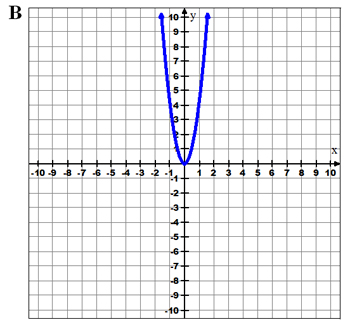
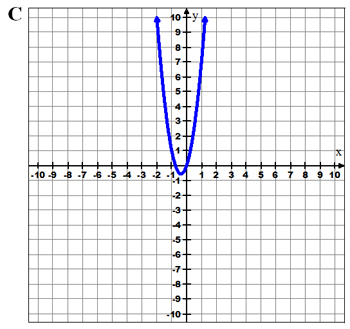
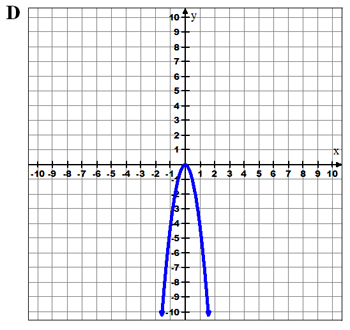
There is one more type of problem to consider. If an equation is a linear equation, it can be written in slope-intercept form and you can check for the slope and intercept on a graph.
However, if an equation is not linear, you will not be able to check for slope and y-intercept.
This is an example of a quadratic equation: y = -4x2 + 3x
This is not linear, but you can use your calculator skills to find the correct answer.
Which graph best represents the graph of y = -4x2 + 3x?
 |
 |
 |
 |
Graph the equation on your calculator. Then also check the table for values for the equation.
Look at graph A.
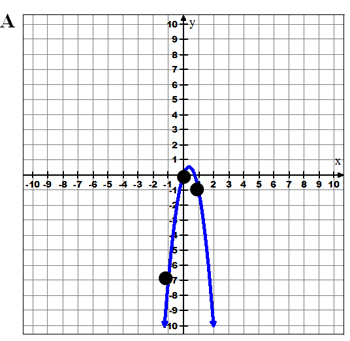 |
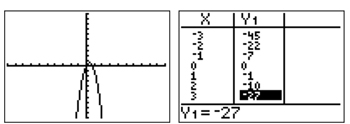
This looks very close to the graph in choice A. It looks like the points (-1, -7), (0, 0) and (1, -1) are on the graph. But don't pick this yet. |
Now look at graph B.
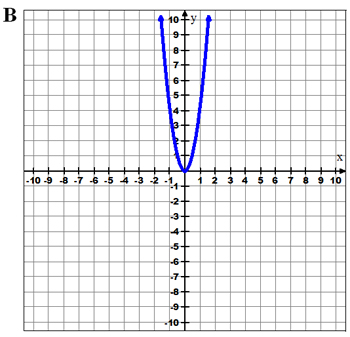 |
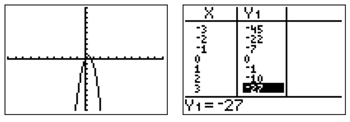
This is definitely wrong from the graph. Graph should open downward. |
Next look at graph C.
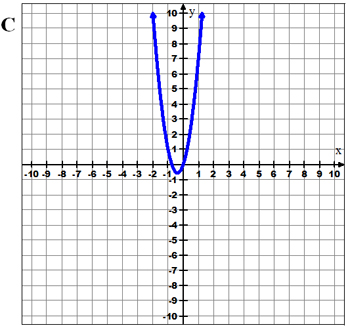 |

This is definitely wrong from the graph. Graph should open downward. |
Last look at graph D.
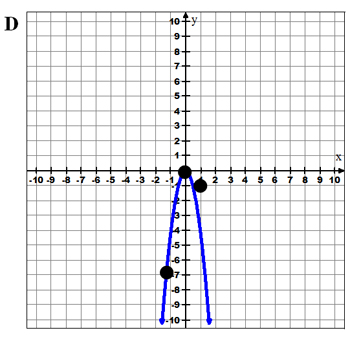 |
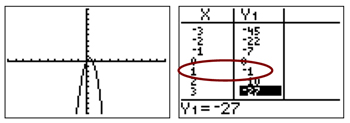
This looks very close to the graph in choice D. But (1, -1) is not on the graph to the left. |
After using your graphing calculator to check and recheck, you can safely say A is correct.
Now try this nonlinear equation: y = x2 + 2?
Decide which answer you believe is correct and record in your notes before scrolling down.
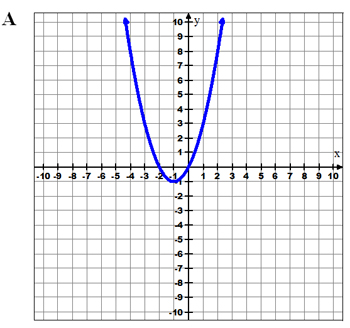 |
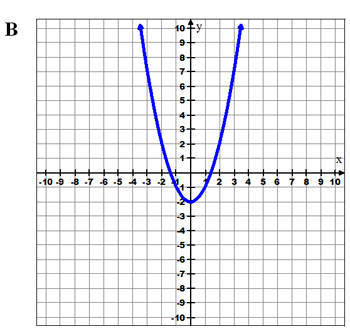 |
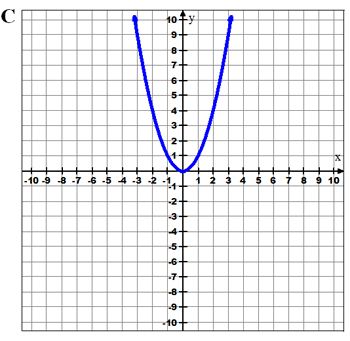 |
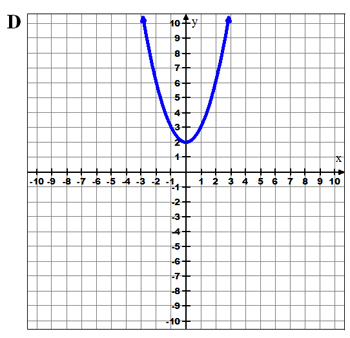 |
Now examine the answers to see the graphing calculator screens and explanations.
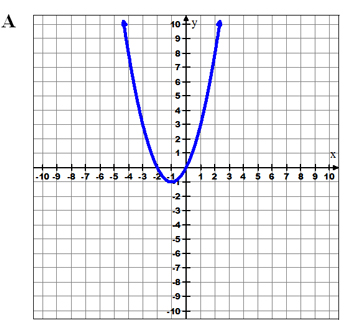 |

Incorrect . The graph does not match. Also, (-2, 6) and (0, 2) are not on the graph given. |
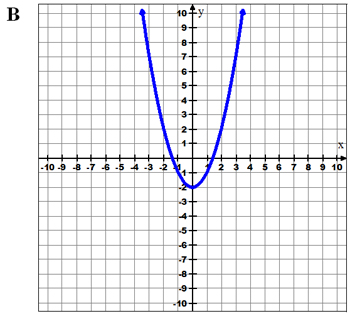 |
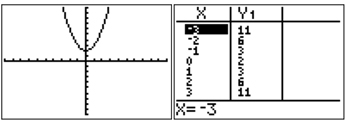
Incorrect. The graph does not match. Also, (0, 2) and (1, 3) are not on the graph given. |
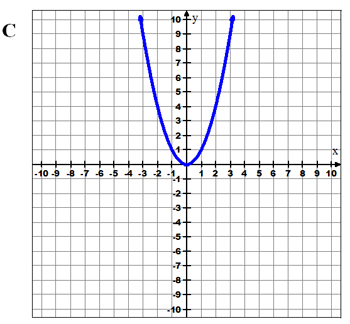 |
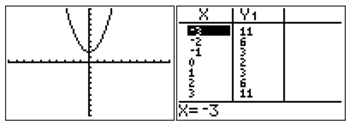
Incorrect. The graph does not match. Also, (0, 2) and (1, 3) are not on the graph given. |
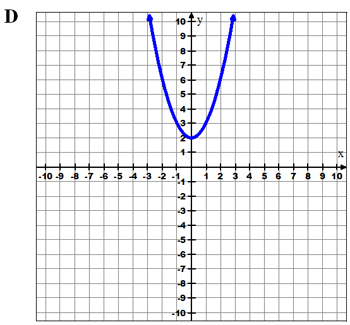 |
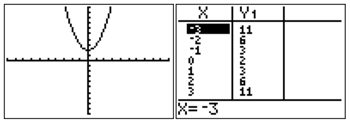
This graph looks correct. The points (0, 2), (1, 3) and (2, 6) are all on the graph. Another correct answer! |